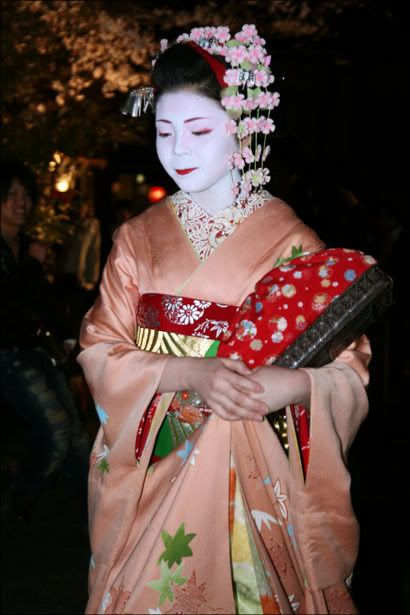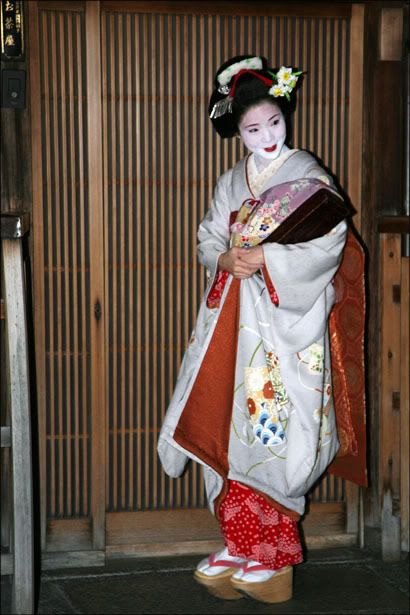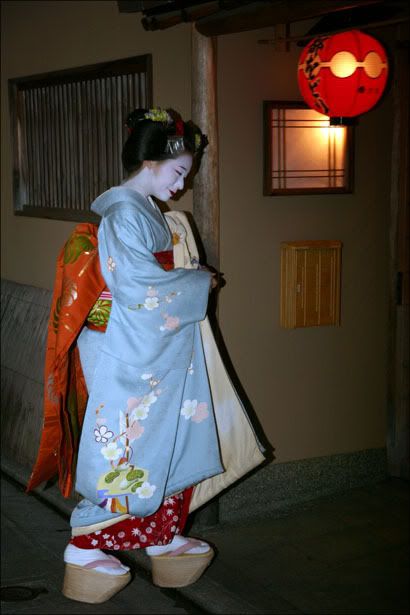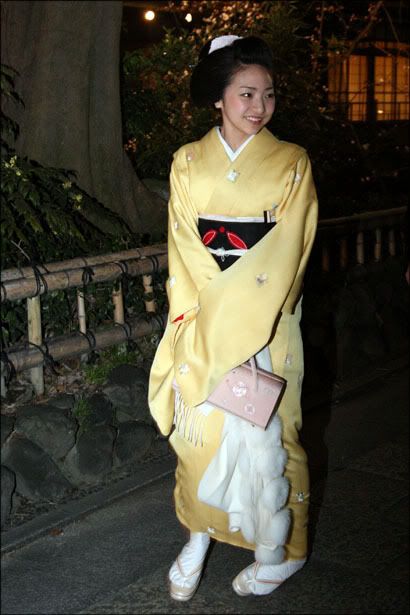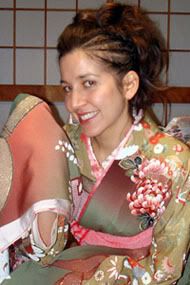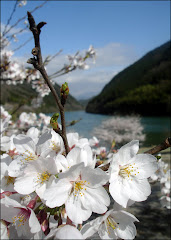Kyoto Rewind: April 2, 2008
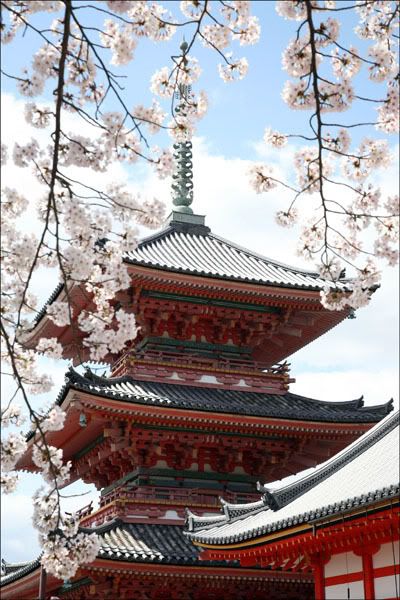
Sanju-no-to, the three story padgoda of Kyoto's Kiyomizu Temple, pierces a powder blue sky through a veil of cherry blossoms.
Just as the cherry blossoms began to reach their height in
Higashiyama, the scenic eastern mountain distict nestled between the historic Gion district and growing waves of verdant hills climbing slowly to the sky, my friend Abbey, my brother and I were joined by the very lucky Londoner who ascended the Ena ALT throne, along with my favorite JLT (Japanese language teacher) and her adorable son for a bit of
hanami and a brief Kyoto Cultural Heritage Tour
a la me!
Since London P had never been to Kyoto, our first stop, after breaking the fast at Starbucks in Gion, was
Kiyomizu-dera, the Temple of Pure Waters. I am a firm believer that it's not the destination, but the journey that matters. Half the fun is getting there! So instead of heading straight for the temple or hopping a bus, I led our little group through Yasaka Shrine to the
Ishibei-kouji, or Stone Wall Lane.

The narrow, covered wooden entrance to the
Ishibei-kouji is cleverly hidden and hard to find, if you don't know where to look. Most tourists walk right by without giving it a second glance.

A curious couple snuck a peek up the dimly lit alley way, then turned around a left without exploring its well-kept secret.

Emerging from the darkened tunnel, you are greeted by wonderfully aged wooden walls and traditional architecture.

The stone paved path leads through traditional Japanese inns, or
ryokan, restaurants and residences. The classic Kyoto atmosphere of the Ishibei-kouji makes it a popular spot for tourists dressed as maiko and geisha to have there photographs taken.

Like elsewhere in Kyoto, traditional and modern co-exist.
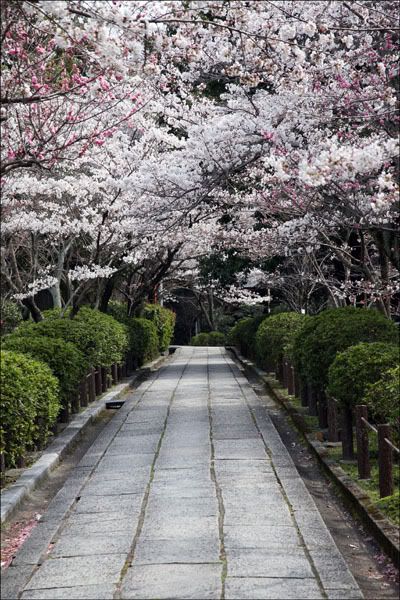
The lane leads to
Nene no Michi, near Kodaji Temple. This is where the ascent to Kiyomizu begins, along with the
hanami.

Holding out his bowl with his eyes humbly lowered, a monk from Kiyomizu begs for alms, chanting silently along the ascent to the temple.

UNESCO World Heritage designated Kiyomizu-dera, the Temple of Pure Waters, is one of Kyoto's most popular tourist destinations.
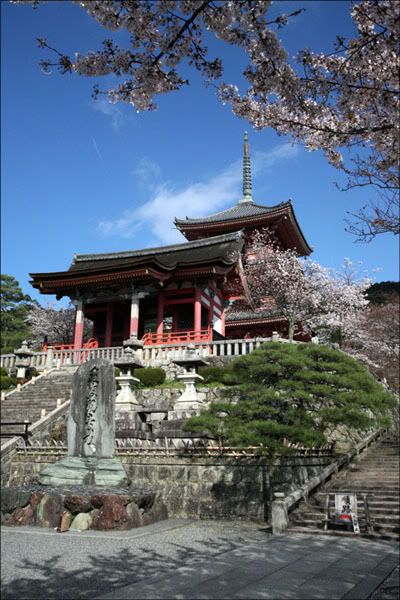
As the main temple of the Hosso sect of Buddhism, it has been destroyed and rebuilt many times in its twelve centuries of history, most recently in 1633.
Kiyomizudera is said to have been constructed from 778 by Enchin, a buddhist priest, in honor of the Kannon Bosatsu (Bodhisattva of Mercy and Compassion).
According to the legend, Enchin received a vision that said he would find at the source of the Yodo river, a clear source of water. During his search Enchin came across a hermit named Gyoei. Gyoei, an old ascetic priest gave Enchin a piece of wood inhabited by the spirit of Kannon, the lord of compassion and goddess of mercy. Carving it into the likeness of the boddhisatva, Enchin enshired it in a small thatched roofed hut, the humble beginnings of the now impressive temple complex dominating the verdant Eastern hills of Kyoto.
The legend says that the hermit disappeared, and when Enchin later discovered his sandals on top of the mountain, he realized that he had actually been speaking with a manifestation of the Kannon.
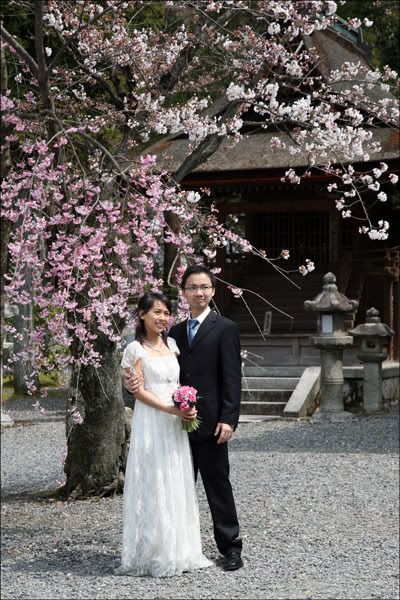
A young foreign couple poses for wedding pictures beneath the cherry blossoms.
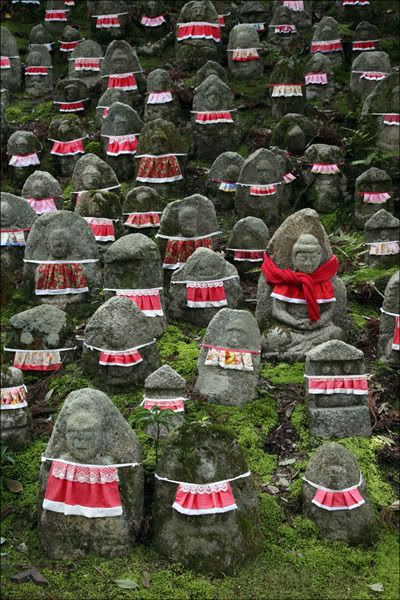
Hundreds of ancient-looking
Jizo statues spring from the lush moss carpeting the slope. One of the most beloved of all Japanese divinities,
Jizo intercedes to ease the suffering and shorten the sentence of those serving time in hell. In Japan,
Jizo is popularly known as the guardian of unborn, aborted, miscarried, and stillborn babies, as well as patron saint of expectant mothers, children, firemen, travelers, and pilgrims.
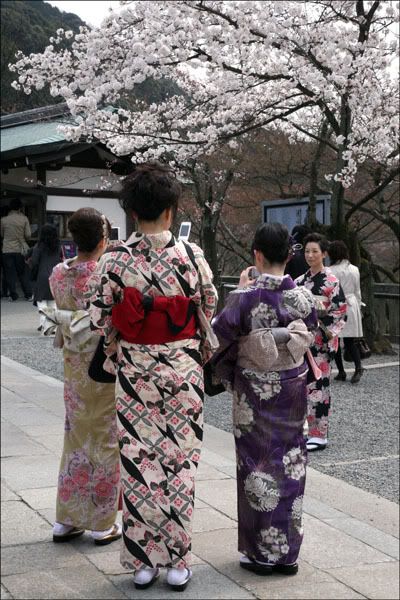
Women in kimono snap photos of one another on their ketai (cell phones).
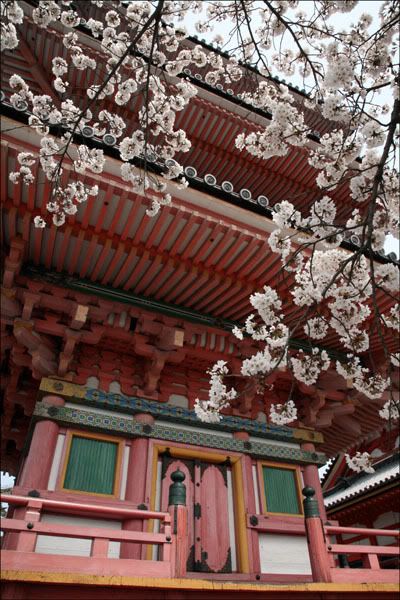
Looking up at the cherry blossoms surrounding the three story pagoda.

Garbage removal the old fashioned way. Sights like this are common elsewhere in Asia, but very rare in Japan.
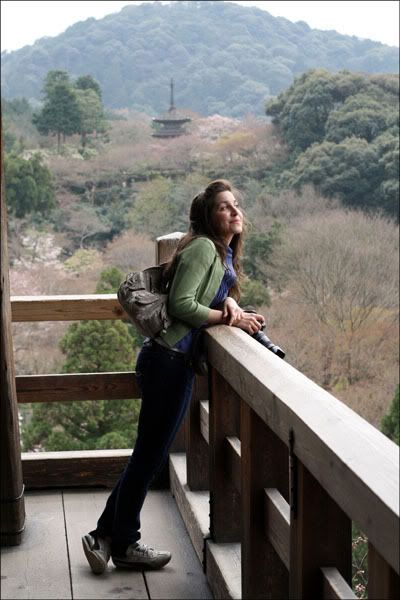
Nestled in the hills of Higashiyama, Kiyomizu's famous stage offers an excellent view of the city and surrounding green.

Enjoying the cherry-blossom-veiled view.
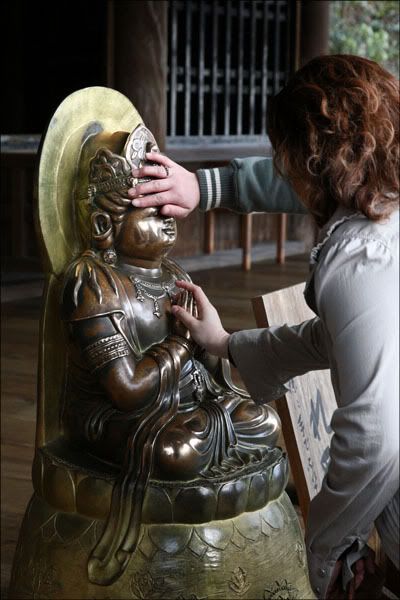
Visitors often rub icons of the Buddha or other religious figures for good luck or healing powers.
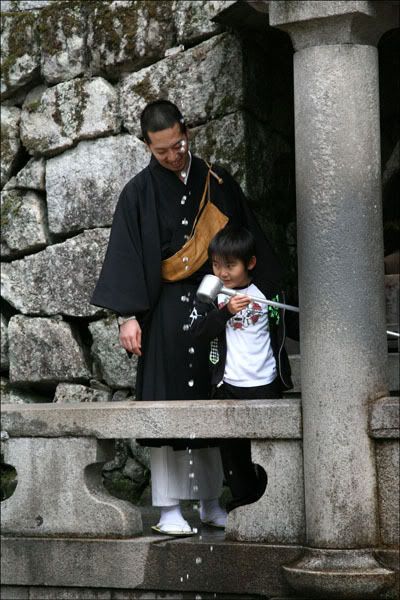
A young monk happily helps a boy get his taste of the
Otowa no Taki, Feather Sound Waterfall, the three streams of which are said to promise love, longevity and wisdom. The visitor must choose one.

This author of this
enma, or wooden prayer plaque, is hoping for a championship showdown between my hometown Hanshin Tigers and Chunichi Dragons.

I'm wishing that next spring will find me back in Kyoto, surrounded by sakura.
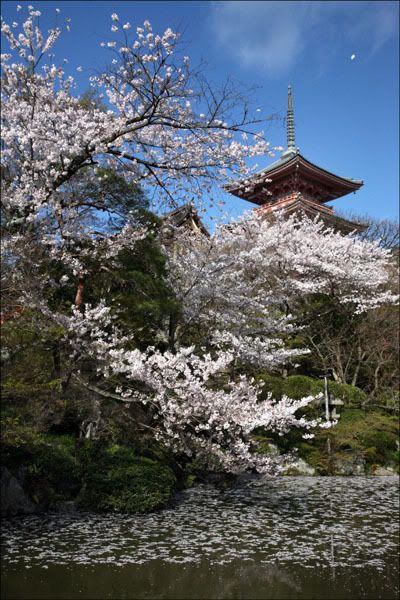
The pagoda peeks over heavy clouds of
sakura, dripping with silken petals which flutter to the surface of the reflective pond, blanketing it like freshly fallen snow.

A view of the main stage of Kiyomizu-dera, floating in clouds of sakura ( and supported by 139 timber pillars). The unique Edo period tradition of jumping off the stage in hopes that one's wishes would come true was attempted by 234 people, each documented in the temples records. Surprisingly, 85.4 percent survived! The Japanese equivalent of the English expression, "to take the plunge", is actually "to jump off the stage of Kiyomizu."

I love Kyoto!

They love Kyoto!

Kiyomizu-dera is just one of many reasons why!
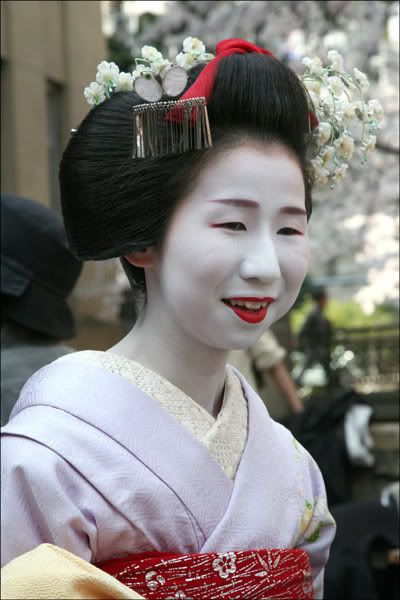
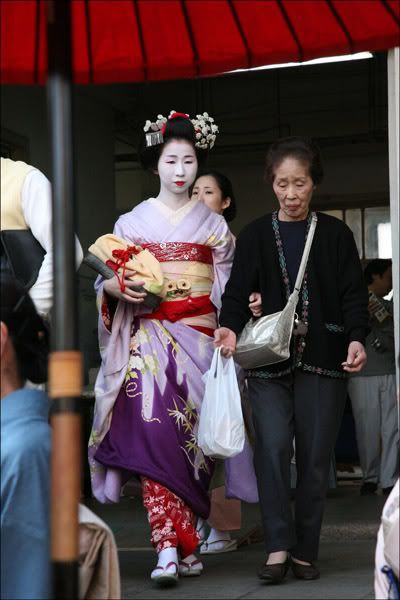
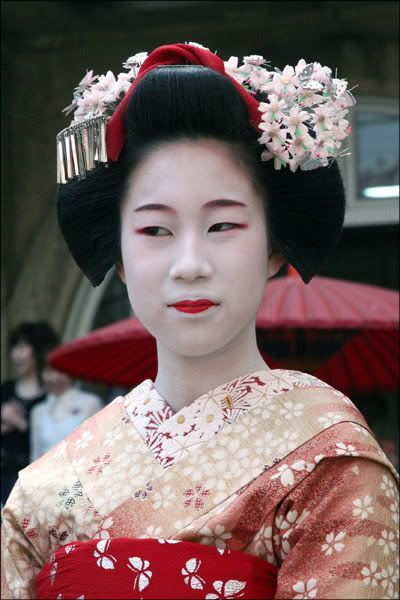
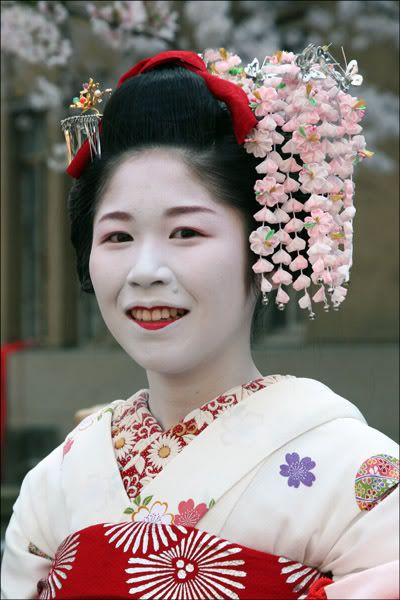
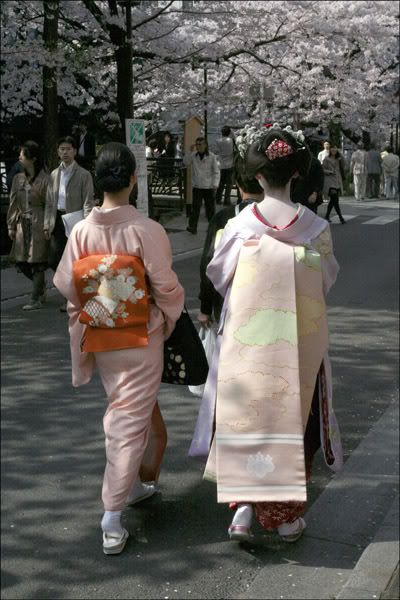





 Walking the streets of Kyoto, somewhere in between the grounds of Nanzen-ji and the Philosopher's Path.
Walking the streets of Kyoto, somewhere in between the grounds of Nanzen-ji and the Philosopher's Path. This stoney, sakura-lined path leads to the gate of a private residence we stumbled upon as we wandered towards the Philosopher's Path.
This stoney, sakura-lined path leads to the gate of a private residence we stumbled upon as we wandered towards the Philosopher's Path. The entire estate was well hidden, surrounded by a wall offering only a glimpse of gardeners grooming the highest branches of the pine trees, shaded by magnificent clouds of cherry blossoms.
The entire estate was well hidden, surrounded by a wall offering only a glimpse of gardeners grooming the highest branches of the pine trees, shaded by magnificent clouds of cherry blossoms. Peaking over the low hedges encircling the entrance.
Peaking over the low hedges encircling the entrance. Bamboo blinds and cherry blossoms provide shade and shelter.
Bamboo blinds and cherry blossoms provide shade and shelter.

 A young girl in kimono smiles beneath the canopy of blossoms covering the path.
A young girl in kimono smiles beneath the canopy of blossoms covering the path. A couple admires the blossoms.
A couple admires the blossoms.

 The narrow, covered wooden entrance to the Ishibei-kouji is cleverly hidden and hard to find, if you don't know where to look. Most tourists walk right by without giving it a second glance.
The narrow, covered wooden entrance to the Ishibei-kouji is cleverly hidden and hard to find, if you don't know where to look. Most tourists walk right by without giving it a second glance. A curious couple snuck a peek up the dimly lit alley way, then turned around a left without exploring its well-kept secret.
A curious couple snuck a peek up the dimly lit alley way, then turned around a left without exploring its well-kept secret.



 Holding out his bowl with his eyes humbly lowered, a monk from Kiyomizu begs for alms, chanting silently along the ascent to the temple.
Holding out his bowl with his eyes humbly lowered, a monk from Kiyomizu begs for alms, chanting silently along the ascent to the temple. UNESCO World Heritage designated Kiyomizu-dera, the Temple of Pure Waters, is one of Kyoto's most popular tourist destinations.
UNESCO World Heritage designated Kiyomizu-dera, the Temple of Pure Waters, is one of Kyoto's most popular tourist destinations.









 This author of this enma, or wooden prayer plaque, is hoping for a championship showdown between my hometown Hanshin Tigers and Chunichi Dragons.
This author of this enma, or wooden prayer plaque, is hoping for a championship showdown between my hometown Hanshin Tigers and Chunichi Dragons. I'm wishing that next spring will find me back in Kyoto, surrounded by sakura.
I'm wishing that next spring will find me back in Kyoto, surrounded by sakura.
 A view of the main stage of Kiyomizu-dera, floating in clouds of sakura ( and supported by 139 timber pillars). The unique Edo period tradition of jumping off the stage in hopes that one's wishes would come true was attempted by 234 people, each documented in the temples records. Surprisingly, 85.4 percent survived! The Japanese equivalent of the English expression, "to take the plunge", is actually "to jump off the stage of Kiyomizu."
A view of the main stage of Kiyomizu-dera, floating in clouds of sakura ( and supported by 139 timber pillars). The unique Edo period tradition of jumping off the stage in hopes that one's wishes would come true was attempted by 234 people, each documented in the temples records. Surprisingly, 85.4 percent survived! The Japanese equivalent of the English expression, "to take the plunge", is actually "to jump off the stage of Kiyomizu."


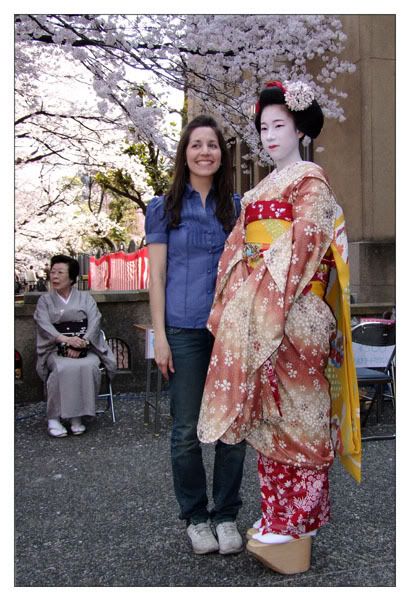
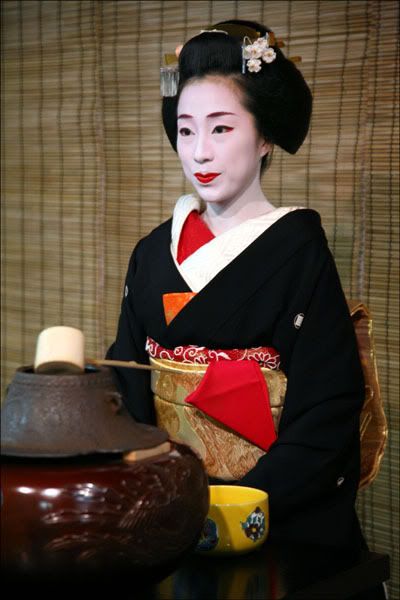
 As Mari finishes preparing a cup of tea, Katsuyuki brings another.
As Mari finishes preparing a cup of tea, Katsuyuki brings another.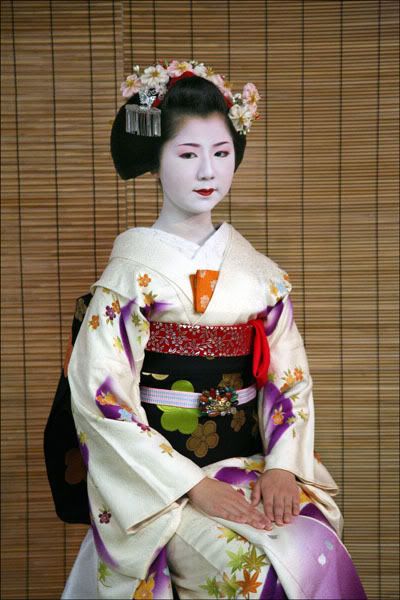
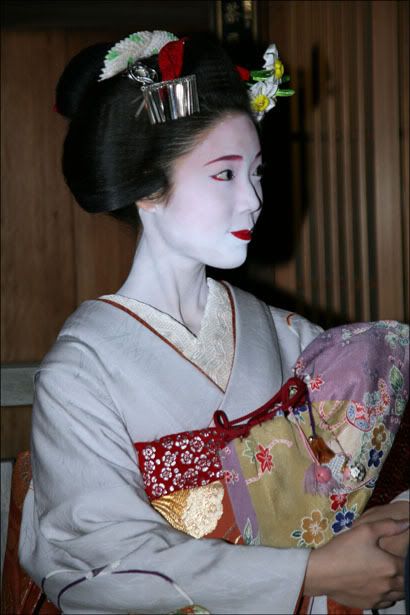
 Peace from lantern-lit Miyagawa-cho! (*^_^*)v
Peace from lantern-lit Miyagawa-cho! (*^_^*)v 
